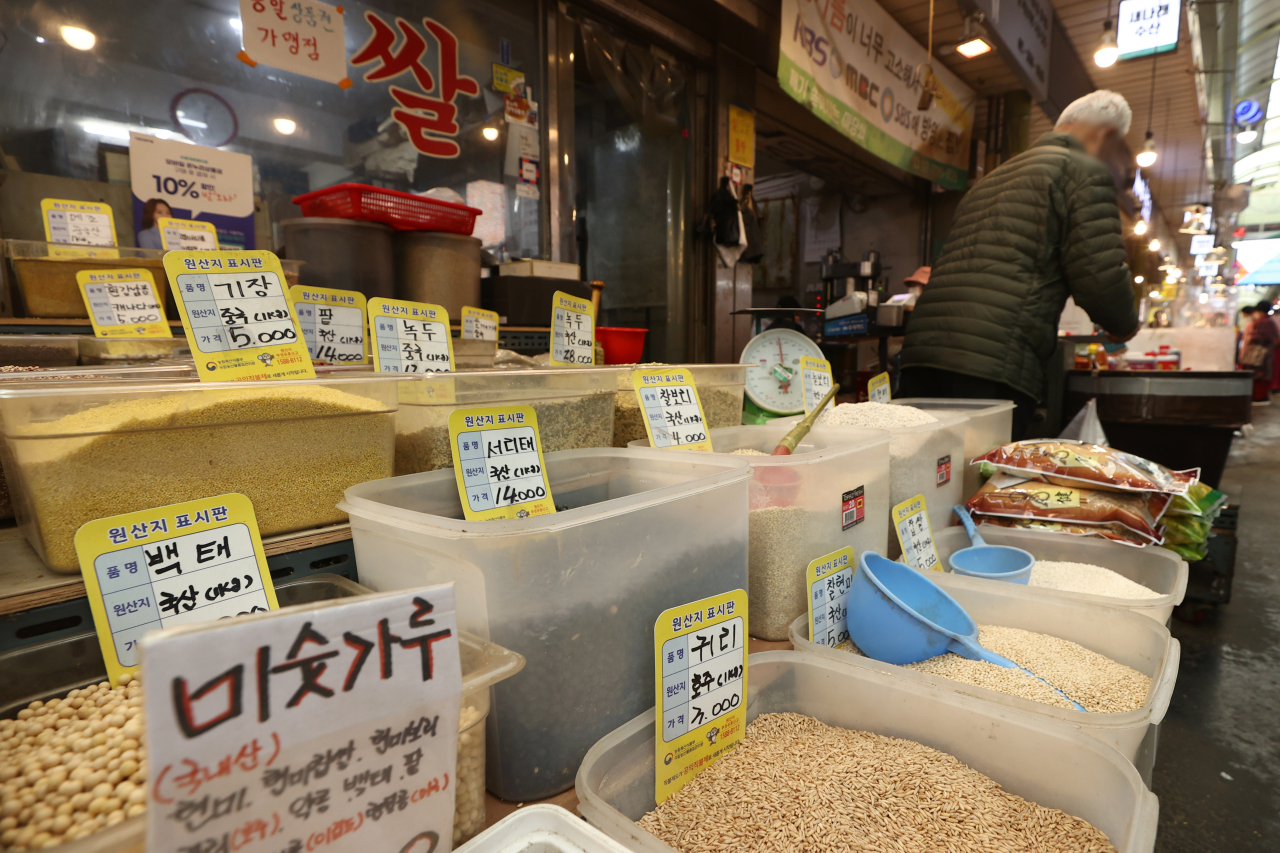 |
A view of grain dealer at a traditional market in Seoul on Thursday (Yonhap) |
SEJONG -- Import prices of grain will likely continue to climb during the second quarter of the year amid deepening inflationary pressure worldwide, a state-funded agency predicted.
According to the Korea Rural Economic Institute, the projection index for import prices for edible grain and fodder grain reached 158.5 and 163.1, respectively, in the period of April to June.
This is a rise by 10.4 percent and 13.6 percent compared to a quarter earlier, under the assumption that the price level was 100 in 2015.
Among the core factors for a forecast of continuous climb were a simultaneous growth in international grain prices, the Korean currency’s weakness versus the US dollar, and hikes in maritime logistics costs.
The prediction comes after grain import price indexes for both edible and fodder rose for five consecutive months, from the first quarter of 2021 to the first quarter of 2022.
Compared to a year earlier, the index for import prices of edible grain in the second quarter of 2022 increased by 43.7 percent. And a 47.3 percent growth was seen in the index for fodder grain.
A hike in grain import prices is directly linked to price hikes in processed food products and food offered at restaurants.
The import price of edible wheat came to $448 (545,000 won) per metric ton in March, up 10.6 percent from a month earlier. This also marked a 58.3 percent growth compared to a year earlier.
On-year basis, prices of beans and corn climbed by 18.8 percent and 31.3 percent, respectively.
The price of fodder wheat reached $333 per ton in March, up 24.7 percent from a year earlier. That of fodder corn rose to $324 per ton, up 31.2 percent on-year.
Amid the situation, the index for future prices of international grain reached the all-time high of 95.2 in March, up 19.1 from February, the institute noted.
Saying that the future price of wheat has surged, the institute said it is attributed to “deepening worries over a serious glitch in the supply of wheat due to Russia’s invasion of Ukraine.”
In the local market, prices of flour-based food have already climbed at a rapid pace over the past year.
According to the Korea Consumer Agency, the average price of naengmyeon (cold noodle) and jajangmyeon (noodle with black soybean sauce) came to 9,962 won and 5,769 won in February, up 10.7 percent and 7.9 percent on-year, respectively.
Rice-based dishes such as bibimbap and gimbap rose by 6.1 percent and 4.3 percent on-year to 9,308 won and 2,808 won, respectively.
By Kim Yon-se (
kys@heraldcorp.com)





![[Weekender] Korea's traditional sauce culture gains global recognition](http://res.heraldm.com/phpwas/restmb_idxmake.php?idx=644&simg=/content/image/2024/11/21/20241121050153_0.jpg)


